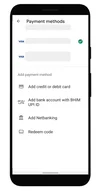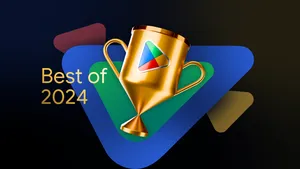Google Play’s billing system: Update
Listening carefully to developer and user feedback is integral to how we continue to make Android better with each release, and improve how the Play Store works. Since we posted a clarification to our Play Payments policy, we have heard some additional questions from the community in India. Below we wanted to address and clearly respond to the topics we’ve heard.
First and foremost, we want to reiterate that we are deeply committed to the success of the Indian ecosystem -- we do not succeed unless our partners succeed. Being mindful of local needs and concerns, we’ve taken the following immediate steps:
- We are setting up listening sessions with leading Indian startups to understand their concerns more deeply;
- We will be setting up Policy Workshops to help clear any additional questions about our Play Store policies;
- And we’re also extending the time for developers in India to integrate with the Play billing system, to ensure they have enough time to implement the UPI for subscription payment option that will be made available on Google Play -- for all apps that are yet to launch, or that currently use an alternative payment system, we set a timeline of 31st March 2022.
In addition, we’d like to provide more clarity on the three recurring topics we’ve heard from the Indian community:
- Whether this is a new policy and who it applies to;
- The forms of payment the Google Play billing system supports;
- Supporting choice of app stores on Android.
Last week we clarified the language in our Google Play Payments Policy in response to developer feedback that the policy language could be more clear regarding which types of transactions require the use of Google Play’s billing system. Our payments policy is not new -- it is our global business model and policy, and we have always required developers who distribute their apps on Play to use Google Play’s billing system if they offer in-app purchases of digital goods. In fact more than 97% of developers with apps on Google Play already comply with the policy.
To be clear, the policy only applies if a developer charges users to download their app or they sell in-app digital items, which is less than 3% of developers with apps on Google Play. You can find more detail on our Payments Policy page and we’ve also posted a developer FAQ that answers many of the top developer questions.
There has also been some confusion that Google Play billing is in itself a form of payment. Google Play billing is a billing system that supports many ways for consumers to pay -- today Play’s billing supports more than 290 forms of payment globally. Over the last several years we have added more local forms of payment in India including credit and debit cards, netbanking, carrier billing, gift cards, and all supported UPI apps. And we will continue to engage with developers and consumers on adding additional forms of payment.

Google Play’s billing system is a payment platform that offers numerous payment options, on which UPI -- and all supported UPI apps -- are available, along with many other forms of payment including netbanking, credit and debit cards, carrier billing, and gift cards.
Note that Google Play’s billing system isn’t just about offering several forms of payment -- it helps ensure a great purchasing experience for Google Play users. It provides clear disclosures about price, what is being purchased, and key subscription information like when a charge will be incurred and whether a charge is recurring. It also includes post-purchase experiences including reminders about when free trials end, and is a one-stop shop for managing your subscription in Google Play including cancellations and refunds.
In short, our billing system provides a simple, safe way for consumers to transact -- and we have seen that this simplicity and safety is critical to growing developers’ businesses inside Google Play.
Finally, we have always said developers should have a choice in how they distribute their apps, and that stores should compete for consumers’ and developers’ business. Android is open and choice is a core tenet of the operating system. It’s why users have always been able to get apps from multiple app stores and why they have always had control over which apps they use, be it their keyboard, messaging app, phone dialer, or app store. In fact, most Android devices ship with at least two app stores preinstalled, and consumers are able to install additional app stores.
We consider it extremely important to understand the concerns across the ecosystem, and these listening sessions over the next several weeks will help us find comprehensive solutions that work for everyone. When a developer succeeds on the Play Store, we consider it our biggest win. At Google we have always had a long and deep commitment to India, and working alongside the startups and developers has given us a more meaningful understanding of how technology can be more helpful. And so we remain committed to engaging with the community, to listen and find the right ways to help the indian ecosystem grow and flourish.




